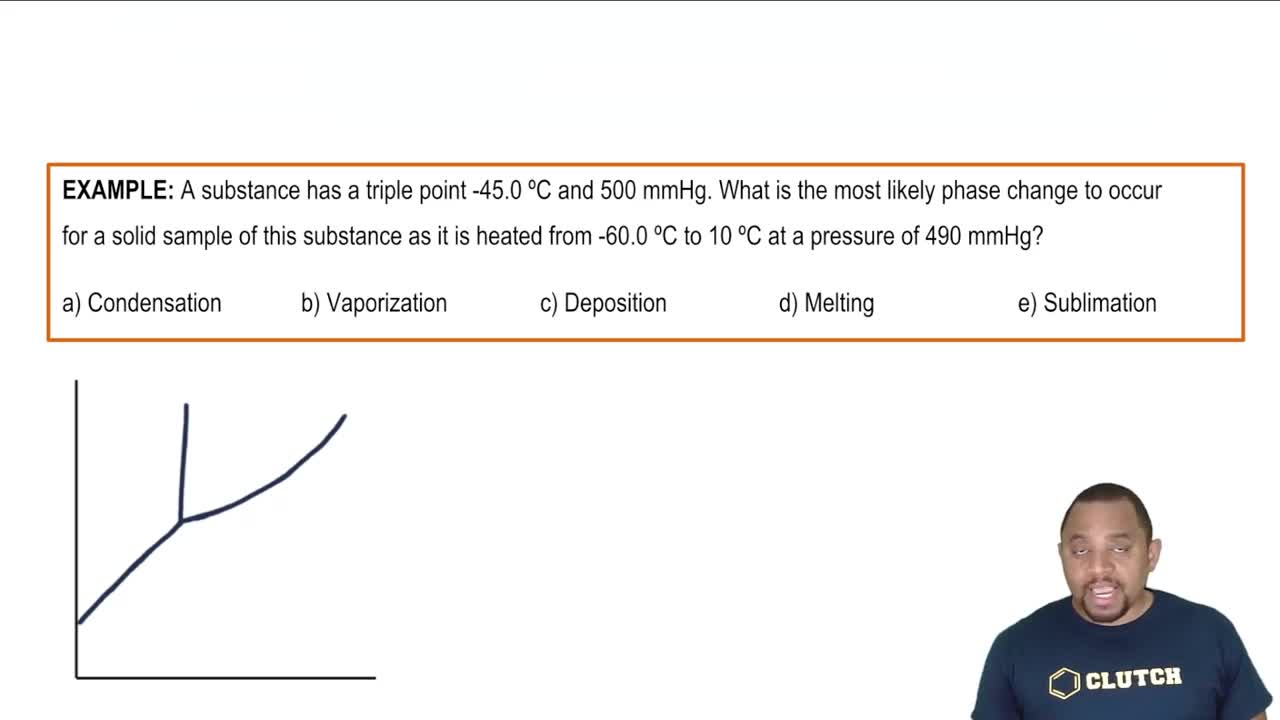Here are the essential concepts you must grasp in order to answer the question correctly.
Sublimation
Sublimation is the phase transition in which a substance changes directly from a solid to a gas without passing through the liquid phase. This process requires energy, known as the heat of sublimation (ΔHsubl), which is the total energy needed to overcome the intermolecular forces holding the solid together.
Recommended video:
Sublimation Phase Change Example
Heat of Vaporization (ΔHvap)
The heat of vaporization (ΔHvap) is the amount of energy required to convert a liquid into a gas at a constant temperature and pressure. This energy is necessary to overcome the attractive forces between the molecules in the liquid phase, allowing them to enter the gas phase.
Recommended video:
Heat of Fusion (ΔHfusion)
The heat of fusion (ΔHfusion) is the energy required to change a substance from solid to liquid at its melting point. This energy breaks the bonds between the molecules in the solid state, allowing them to move freely in the liquid state. The relationship between ΔHsubl, ΔHvap, and ΔHfusion reflects the energy transitions involved in moving from solid to gas.
Recommended video:
 Verified step by step guidance
Verified step by step guidance


